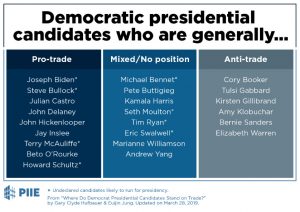The following article by Ruy Teixeira, author of The Optimistic Leftist and other works of political analysis, is cross-posted from his blog:
One of the most consequential decisions of Obama’s early administration was to let a small group of, as Simon Johnson puts it in an excellent American Prospect review essay, Status Quo Republicans–Ben Bernanke, Tim Geithner and Hank Paulson–set the overall response to the financial crisis. As Johnson remarks, if you hire Republicans, you will get Republican policy.
Johnson’s review essay covers two books, a jointly written defense of their role in the financial crisis by Bernanke, Geithner and Paulson and Reed Hundt’s new book, A Crisis Wasted: Barack Obama’s Defining Decisions. (Hundt, FCC chairman under Bill Clinton, was on Obama’s 2008 transition team and, besides knowing all the players, had a close-up view of these decisions being made).
Hundt’s book is primarily concerned with why an alternative approach was not taken, rather than letting the Status Quo Republicans run the show. Hundt’s answer, as summarized by Johnson:
“Obama did not bring with him a large, experienced team, and during the campaign he developed only broad-brush ideas. The experts on the details were almost all people who had worked with the Clintons. They were Small Ball Democrats—smart people with admirable ideas, but hardly in a position to stand up to Status Quo Republicans. New Deal–style Democrats were conspicuous by their absence.
The financial sector was saved, largely intact, by unprecedented government support. If homeowners had received the same level of support in 2008-2009—for example, in the form of cheap refinanced mortgages—what would have happened? The American economy would have recovered, house prices would have risen, and everyone involved would have looked like a genius. Modern central banks control the price level and this has a primary, direct effect on asset prices—including housing. In most of the country, house prices bounced back but millions of homeowners could not finance their way through the trough. Powerful people in the financial sector could obtain cheap loans, even in the darkest days, because their access to credit was the top priority for both the Bush and Obama administrations.
The result, in rough chronological order, was: mass unemployment, greater inequality, collapsed opportunity, confused anger, and President Trump. The efforts put into financial reform—making sure this could not happen again—by Messrs. Bernanke, Geithner, and Paulson were weak. They lament that next time the central bank will not have the tools to deal with an incipient crisis. If that proves true, it is because their generation undermined the legitimacy of the Federal Reserve through inattention to regulation, consumer protection, and blatant bad behavior before the crisis, and through subsequently allowing the Too Big To Fail banks to become even larger and more dangerous—the total indebtedness of JPMorgan Chase today is in the range of $2.5 trillion.”
This really was the great failure of the Obama administration. Where it really counted, they just had the wrong people in charge and the consequences were immense. There is nothing more important than ensuring this does not happen again.
As Johnson concludes his essay:
“It is unlikely that the next Democratic president will want to be seen as another reincarnation of the Clinton administration. But are the potential home-run policy ideas being debated and honed in sufficient detail? Who will be hired—and with what experience—to be in charge of implementation? What are the plans for regulating the financial sector, which is more powerful than ever? And who exactly will be in charge when anything starts to go wrong in the macroeconomy? On these questions may turn both the election and the future of American democracy.”
I recommend you read this important essay in full and perhaps pick up Hundt’s book to boot. For extra credit, you could try Noam Scheiber’s book, The Escape Artists: How Obama’s Team Fumbled the Recovery, which is an excellent, detailed account of exactly what the subtitle says it is.






